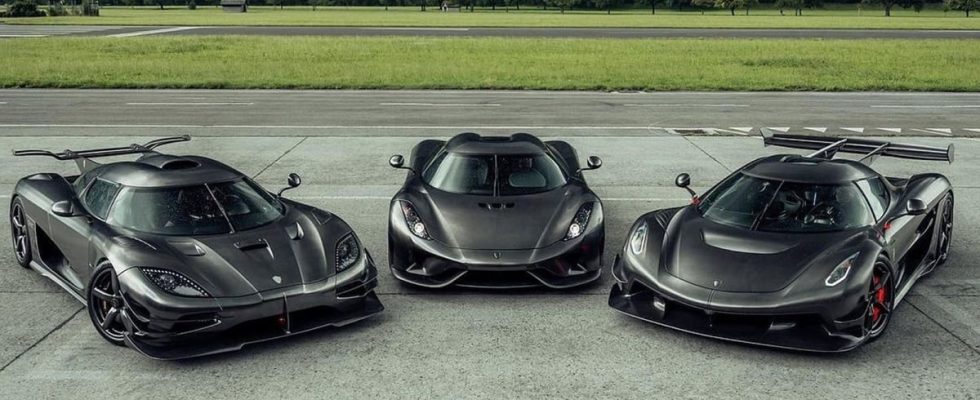One of the most expensive and most spectacular options offered by the sports car manufacturer is called Koenigsegg Naked Carbon, abbreviated KNC.
All the body panels on the Koenigsegg cars are made of strong, expensive and light carbon fiber, and as the name suggests, KNC is all about leaving this bare, i.e. unpainted.
An exercise in precision
Koenigsegg is not alone in leaving the carbon fiber visible, but to create the KNC, Koenigsegg goes a few steps further than most.
A carbon fiber panel, simply explained, consists of several layers of carbon fiber fabric that have been laminated together with epoxy plastic. On an unpainted panel, the carbon fiber fabric must be laid out very precisely as the result must be visually perfect.
Koenigsegg has only built three KNC cars – Photo: Koenigsegg
What makes KNC unique is that after lamination, all excess epoxy is sanded away all the way down to the carbon fiber fabric, which both saves weight and gives KNC its special appearance.
The tricky thing is that if you sand the slightest bit too far, you start to wear the carbon fiber, and then you have to start over with a completely new panel.
China will soon be the world’s largest car exporter – bets on Russia
Swedes’ favourites: Here are the best-selling car brands in 2023
Three cars in the whole world
Achieving an absolutely perfect KNC finish thus requires unprecedented precision, and the time required to make an entire car in KNC is thus enormous.
As you know, time is money, and this is very much the case when it comes to KNC. The option costs a whopping SEK 4.8 million.
With a price tag like that, it’s perhaps not surprising that there are currently only three Koenigsegg cars with KNC finishes.
The first KNC car was a Koenigsegg Regera that was delivered to a customer in Switzerland in 2018. Later, a ONE:1 and a Jesko with a KNC exterior have also been produced.
F1 champion Verstappen was not allowed to rent a sports car – is too young
Here is the man with SEK 800,000 in unpaid parking fines
